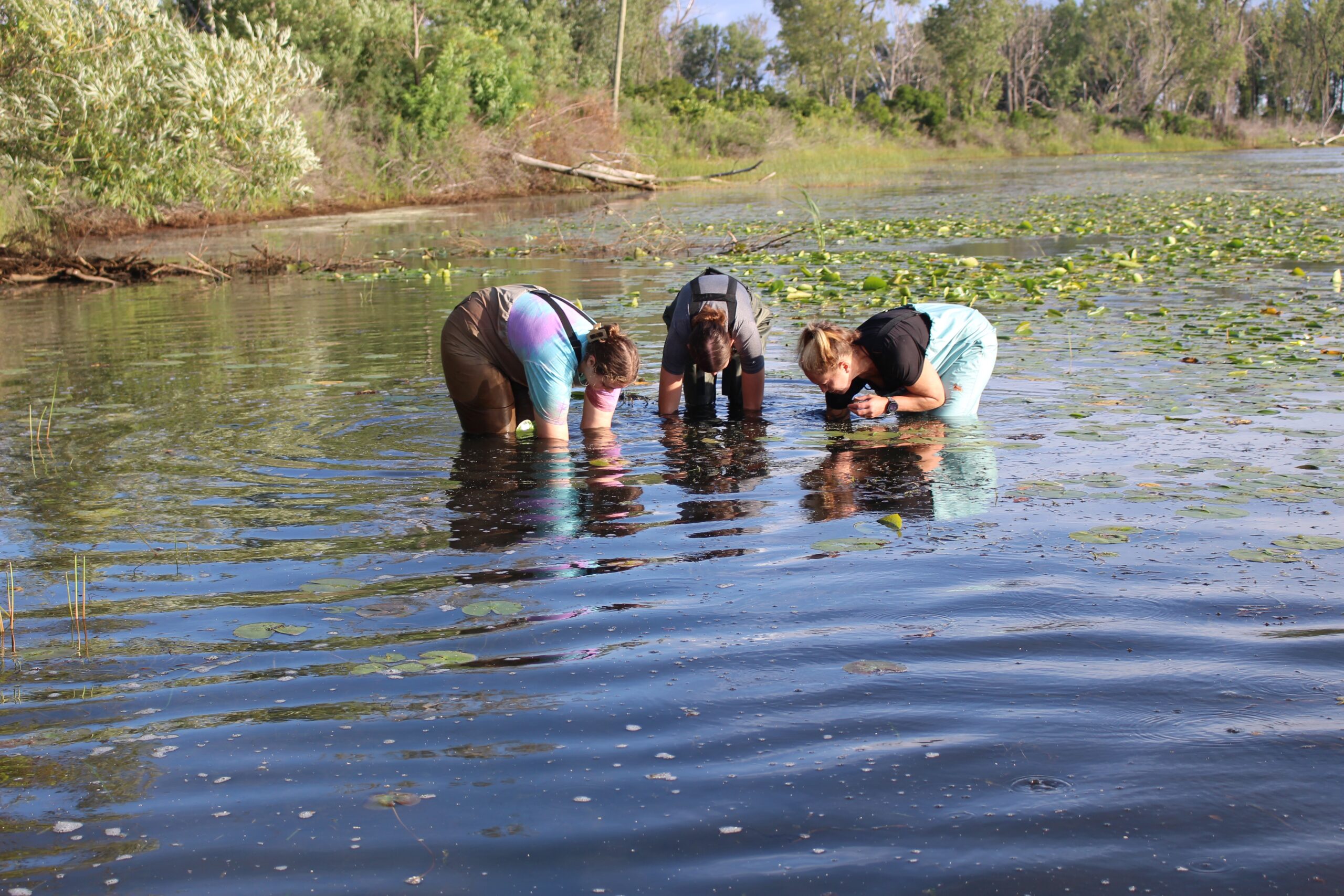This story was originally published on September 8, 2023.
This story is part of our series, Wild Pennsylvania. Check out all of our stories here.
Invasive species threaten biodiversity and ecosystems across the globe at a price tag of more than $400 billion annually, according to a new UN report. In Pennsylvania, state and federal agricultural agencies are spending $6 million to combat the spotted lanternfly and other invasives.
One step in controlling non-native species is figuring out where they are in the state. Researchers and other outdoor enthusiasts helped gather data this summer on certain invasive species, including one aquatic animal, mysterysnails.
LISTEN to the story
On an August morning at Thompson’s Bay, along the shoreline of Lake Erie in Presque Isle State Park, the Penn State Behrend “snail squad” stepped into the water, wearing waders.
“This is when you find out if your waders are leaking,” smiled Dr. Lynne Beaty, an assistant biology professor. She and her team have been coming here for the past four years to survey for Chinese and Japanese mysterysnails.

The Penn State Behrend research team consists of (from left) Sam Nutile, assistant biology professor; Holden Cooper, senior biology/ecology major; Lynne Beaty, assistant biology professor; and Haley Altadonna and Hannah Phillips, both senior biology/ecology majors. Photo: Julie Grant / The Allegheny Front
Few people visit this spot than other parts of the park, and snails like the calm, mucky bay water.
“If there’s too many waves, they’re likely to get dislodged from whatever surface they’re on and get tossed around, which is just generally not pleasant for them,” Beaty said.
Once the team measures out a transect in the water, one by 10 meters, they start looking for snails, crouching low and searching the bottom.
“We physically feel around and grab snails,” Beaty said as she pulled out a large brown snail, measuring about two and a half inches from the tip to the bottom of its rounded whorls.
“This is a mysterysnail,” she said. “You can tell it’s a mysterysnail first by the size…they’re so much larger than any native snail that we have.”
Mysterysnails were initially brought to California in 1892 as a food source. People can purchase the snails at aquarium sites online and sometimes purposely introduce them into ponds or lakes. They’re commonly used to eat algae in home aquariums.
“Aquarium release is another main way where people had them in their aquarium, and then they don’t want them anymore,” Beaty said.
She stuck a small yellow tag on the snail before putting it back in the water. In 12 days of snail surveying this summer, the squad tagged around 1,300 mysterysnails.
Beaty isn’t yet sure what that means for native snails like Pointed Campeloma and Liver Elimia.
“There have been studies that have shown that they can negatively affect the abundance of some of our native snails that compete for food,” she said. And they live longer. “Like, these guys can live somewhere between three and eight years, which is really long for a snail,” she said.
That’s more time that mysterysnails have to reproduce. Some spots at Presque Isle that had only one or two last year are now brimming with them, and this could be bad news for native snail populations.
“Over by the bridge, we hadn’t found any there in 2019, 2020, or 2021,” Beaty explained. “Last year, we found one and a baby. This year, they’re like there, they’re just there.”

Lynne Beaty, an assistant biology professor at Penn State Behrend, is holding a mysterysnail at Presque Isle State Park. Photo: Julie Grant / The Allegheny Front
Part of a larger effort to document invasive species
Beaty and her team have uploaded data to a state-wide listing of invasive species called Pennsylvania iMapInvasives. Understanding where and how many invasive species exist in the region is the first step in understanding their impact, according to Amy Jewitt, who coordinates the iMap database.
“If this data isn’t being recorded or known about by someone, somewhere, how are we going to know how to manage for it?” said Jewitt, who is with the Western Pennsylvania Conservancy and the Pennsylvania Natural Heritage Program. They held a month-long scavenger hunt this summer for people across the state to look for invasives.
“The purpose of this scavenger hunt is to get folks out in the field looking for a set number of invasive species,” Jewitt said.
iMap tracks 412 invasive species in Pennsylvania, including certain plants, insects and aquatic animals. The 2023 scavenger hunt focused on European alder trees, purple loosestrife and mysterysnails, among a list of 10 invasives.
“This is a way to get more people to understand that all of these species shouldn’t be here, but they are,” Jewitt said. “And we want people to be aware that [invasives] are causing trouble, whether we realize it or not.”
Thirty-four people collected and submitted data to iMapInvasives in Pennsylvania during the scavenger hunt in August. The data collected can then help experts quantify the scale of issues and decide responses.
When Lynne Beaty and her team tallied their findings at one muddy transect at Presque Isle, they found seven mysterysnails.
“That’s a good amount to find, seven snails in 10 meters,” she told the team.
Protecting NW Pennsylvania’s most pristine natural lake takes vigilance



